Seville Cathedral in Andalucia, the largest cathedral in the world and home to the tomb of Christopher Columbus, is a UNESCO World Heritage Site
By Nick Nutter | Updated 10 May 2024 | Seville | Places To Go |
Login to add to YOUR Favourites or Read Later
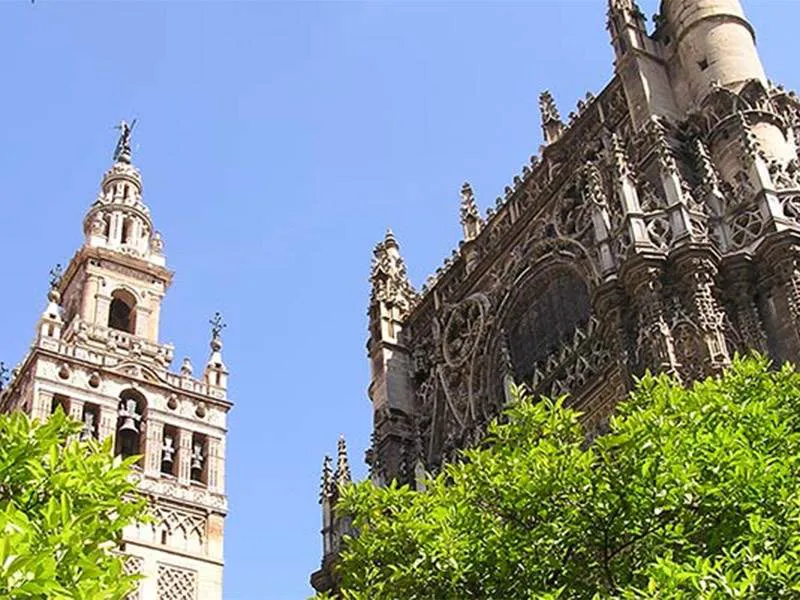
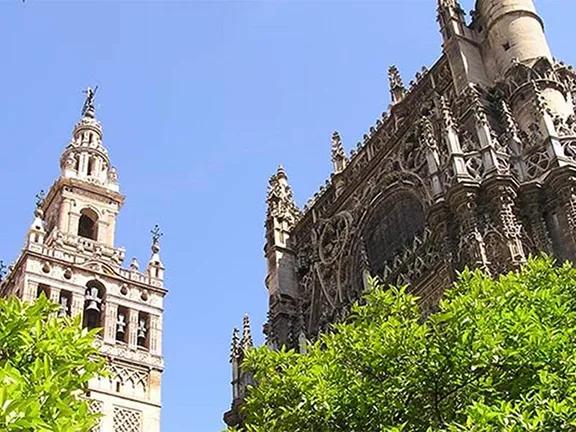
Seville Cathedral
A certificate from the Guinness Book of Records proudly displayed there pronounces the Cathedral at Seville to be the greatest in volume, making it the largest cathedral in the world. So immense is the structure that experts believe it has its own climate. It certainly has an atmosphere of its own.
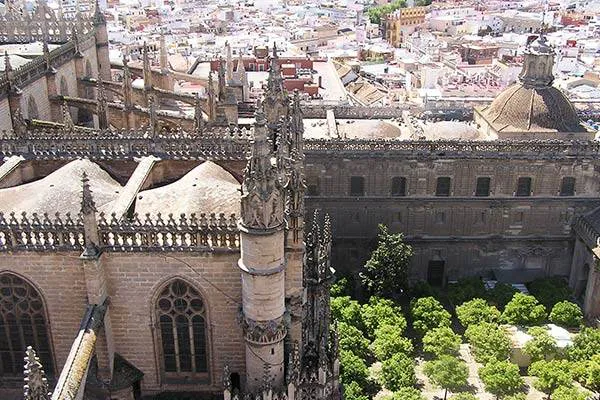
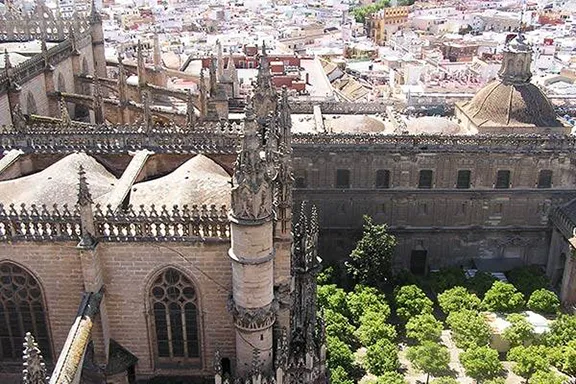
Seville Cathedral View
The building of Seville Cathedral started in 1401 and it was finished in 1506, only fourteen years after the reconquest and the fortuitous finding, by Columbus, of the Americas. It was deliberately built to demonstrate the power and wealth of the church and later the Christian Monarchs, it was built to impress.
It is most impressive to this day although without the gold and silver brought back from the West Indies during those first years - it may have had to be satisfied with just being the biggest.
Volume is not the only record the cathedral holds. The altarpiece or ‘retablo’ is composed of gilded, carved, wood with 45 Biblical scenes and over 1,000 figures. It is the largest and richest altarpiece in the world, the life work of a master craftsman Pieter Dancart who completed his work in 1497. The huge amounts of gold, the guides must surely be exaggerating the weight, that overlaid the Gothic wood carvings came from the treasure ships after 1492 and the gilding was not completed until the early 16th century.
The cathedral is so interwoven with the history of the Americas that Columbus’s tomb is displayed there. Again, everything is not as it seems. Even after death Columbus continued his travels. He died in 1506; the year Seville cathedral was completed, and was first interred in Valladolid. His bones were then moved to Seville.
In 1542, they travelled across the Atlantic to Santo Domingo where his son had been a governor. The French took over Santo Domingo in 1795 and Columbus found himself on the move again, to Havana. After the Spanish American War, in 1898, Cuba became independent and the bones returned to Seville during the Cuban revolution in 1902 to finally come to rest in the monumental Late Romantic-style tomb on display today.
... Or did they? In 1877, another box of remains was discovered at Santo Domingo labelled, ‘Don Christopher Columbus’. DNA tests were made to try to settle the matter. Columbus remains as much a mystery in death as he was in life.
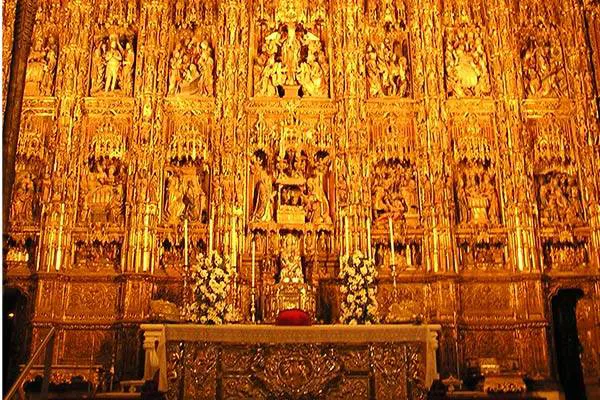

Seville Cathedral Alterpiece
To contain the fabulous wealth the church came by as a result of Columbus’s finds, a part of the cathedral had to be converted in 1528 into the Sacristia Mayor to house the treasury.
In here you will see silver monstrances and reliquaries, artworks by Goya and others and, inexplicably, a collection of skulls. Notice also the huge keys. These were the keys to the city gates presented to Fernando when the city surrendered. Arabic script engraved into the metal translates as May Allah render eternal the dominion of Islam in this city.’


Seville Cathedral Bell
Seville was re-conquered in 1248, very early in comparison to much of Spain. At that time, attitudes to the Moorish invader and their architecture were different to those two hundred years later. In 1248, the Moorish inhabitants were actually threatened with a massacre if they damaged any of the city’s magnificent edifices.
The most outstanding building was the Almohad mosque that the conquerors simply rededicated to the Virgin and used as the city’s principal place of worship. Dominating the mosque was a minaret, the Giralda Tower, which was built between 1172 and 1195 and is now the highest tower incorporated into the cathedral. The tower was named after the weathervane on top called El Giraldillo and is probably the finest of the three remaining Almohad minarets, the other two are in Marrakech and Rabat.
A climb to the top up the interior sloping ramps is rewarded by the best panoramic views of Seville from the bell tower. Being there on the hour is an experience you will never forget. For some reason, the ramps were designed to allow a man on horseback to ascend the tower.
About half way up the tower is a chamber with a glassed in door. Inside is a clock that was removed from the tower in the 1960s. The clock on view had kept reliable time since 1764 and itself replaced a clock that was inaugurated in 1401. Of the original clock, only the bell survived and that was incorporated into the 1764 clock.
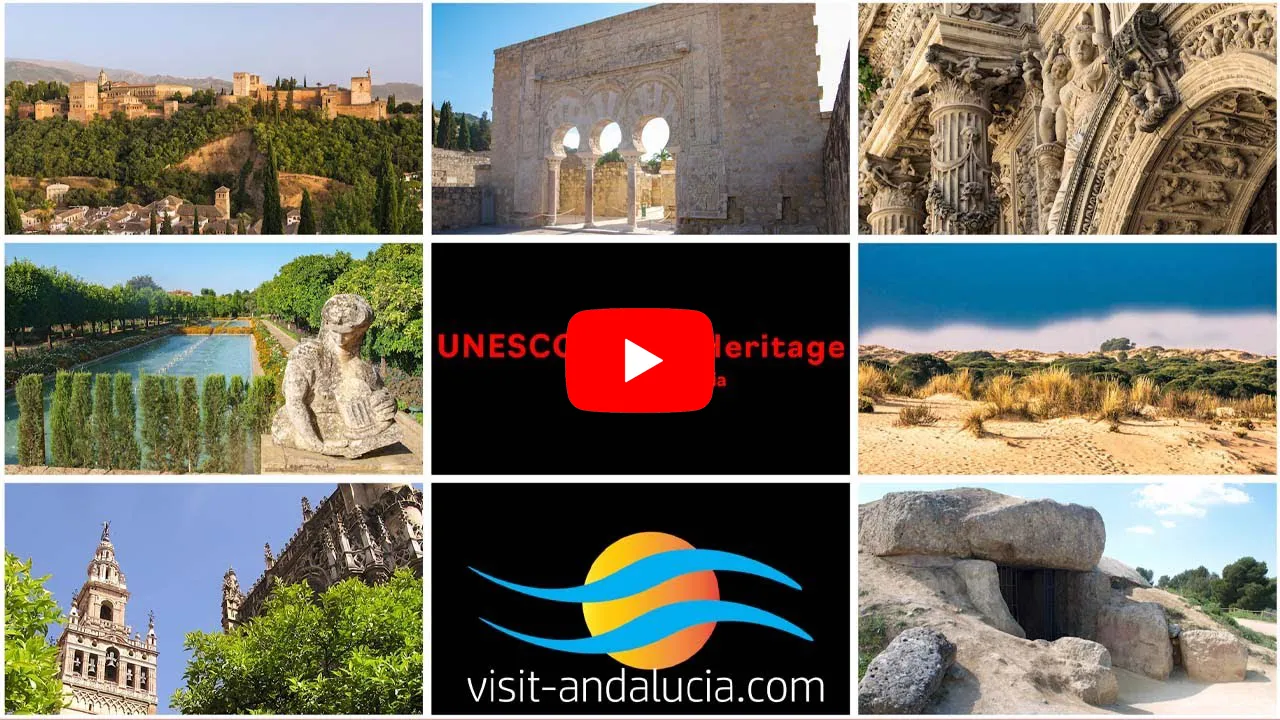
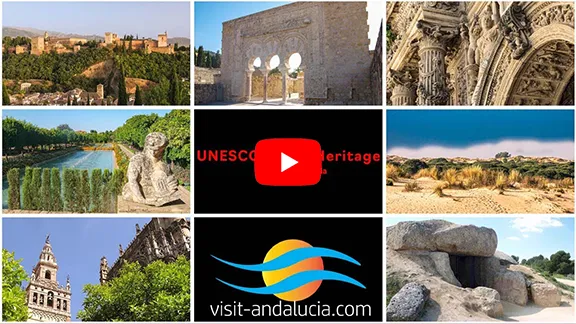
Video By: Julie Evans

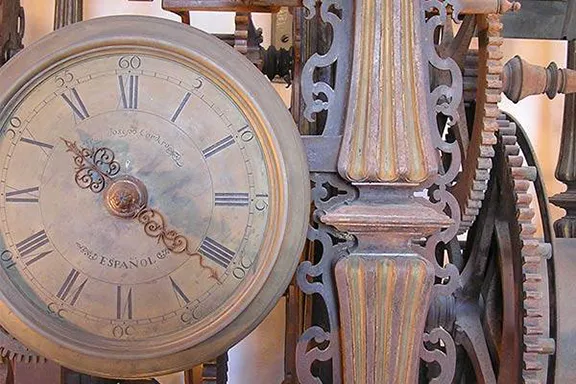
Seville Cathedral Clock
The only other part of the cathedral that remains from the original mosque is the Patio de los Naranjos, the original Moorish entrance court. In typical Moorish style, the courtyard has irrigation channels in the flagged surface to water the orange trees that thrive there. The result is a shady, restful space that is probably unique in a cathedral and a perfect place to admire the flamboyant flying buttresses, the elegant walls and the elaborate stained glass windows.
Although the architect of Seville Cathedral is unknown, the style is reminiscent of the cathedral at Rouen in France and it is thought the same architect designed both. Unfortunately nobody seems to know who the architect of Rouen Cathedral was either.
Having a very high roof and relatively thin walls creates the internal volume and elegance within the cathedral. The exterior walls alone, however, would not support the massive weight of the stone roof particularly since they also had to cater for the huge, ornate, stained glass windows that are another famous feature of Seville Cathedral.
The answer arrived that in France at about 1200 AD, after a great deal of trial and error, was the use of flying buttresses. The weight of the roof is transferred outwards via a stone arch to a thick column down to the ground. The flying buttresses gave the masons even more scope for ornament of which they took full advantage at Seville.
Together, these three buildings form a remarkable monumental complex in the heart of Seville. The cathedral and the Alcázar – dating from the Reconquest of 1248 to the 16th century and imbued with Moorish influences – are an exceptional testimony to the civilization of the Almohads as well as that of Christian Andalusia.
The Giralda minaret is the masterpiece of Almohad architecture. It stands next to the cathedral with its five naves; the largest Gothic building in Europe, it houses the tomb of Christopher Columbus. The ancient Lonja, which became the Archivo de Indias, contains valuable documents from the archives of the colonies in the Americas.
The Seville Cathedral is one of the most-visited attractions in the city so don't be surprised if you see long lines to enter the monument.
To skip the line and save some time, I highly recommend buying your ticket online (includes entrance to La Giralda). Plan about 60 to 75 minutes for your visit.
Check availability for your visit date below.
If you'd like some historical context, consider taking a guided tour of the Cathedral and Giralda where you'll learn all about the fascinating history of the building.
You can also combine your visit of the Alcazar and the cathedral on this guided tour which is a great way to tick off the city's two main highlights.
Looking for more recommendations for tours and activities in Seville? Read these:
Need help planning exactly what to see and do on your Seville visit? Our itineraries can help guide you:
You can also read our other articles on Seville:
Travelling to/around Spain and need some help? Here are our favourite travel resources.
We usually use Booking.com to look for hotels or apartment rentals. Lots of choice & you can unlock more discounts with their Genius loyalty programme!
To research transportation options around Spain, we like using Omio. It’s an easy way to compare different modes of transport and prices in one place. To search train routes, schedules, and prices, we recommend using Trainline.
Renting a car gives you the ultimate freedom to explore Andalucia at your own pace. Click here to compare car rental prices. (You’ll be surprised at how affordable it is in Spain!)
For last-minute holiday deals, check out Expedia UK.
Looking for things to do? Viator has a huge catalog of activities and tours across many cities in Spain. We also love Get Your Guide!
Guruwalk is our favourite platform to find the best free walking tours in a city.
For money transfers or spending overseas in foreign currency, Wise is our favorite borderless banking service (we love their debit card that's without fees!).
Travel insurance is a must to protect against emergencies and unexpected incidents. Get a quote from SafetyWing here.
For an easy way to stay connected on the road, get an eSim from Airalo. It's affordable and, best of all, you'll be connected the moment you arrive!
Check the opening times of Catedral de Sevilla here